How to Create an AI Influencer: Complete 2025 Guide
AI influencers aren’t science fiction anymore — they’re designed characters with personalities, voices, and stories that people actually follow. This guide breaks down how to create an AI influencer step-by-step: from visual identity and voice setup to content style, growth strategy, and monetization. You’ll also learn how Scrile AI can help you build and launch your own character as a real brand.
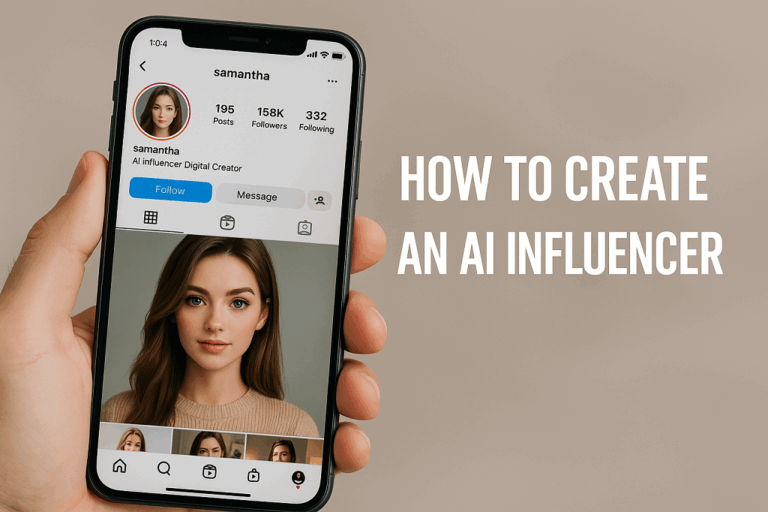
ai generated influencer
You’ve probably scrolled past an influencer photo and only later realized something felt… different. The smile was perfect, the lighting was unreal, the story felt crafted in a way that didn’t quite match real life. And then it clicks — this person might not exist at all. And it doesn’t bother you. Because when someone (or something) feels expressive and consistent, the brain cares more about the personality than the physical presence. That’s the strange new territory we’re in now.
So the question how to create AI influencer isn’t a sci-fi question anymore. It’s a creative one. It’s about building a character with a look, a tone, a worldview, and giving them a way to show up online. AI influencers aren’t “robots pretending to be people.” They’re the next evolution of storytelling mixed with branding, visual design, and automated content flow — and yes, anyone can build one in 2025.
What Exactly Is an AI Influencer?

An AI influencer is a character that lives online the way a human influencer does — posting photos, interacting with followers, developing a voice, a mood, a sense of style. The difference is that this character is designed. Someone decides how they look, how they speak, and what they care about. They have a backstory, tastes, a personality arc, just like a fictional character would — except they show up in your feed every day like a real person.
There are two broad ways these characters exist:
- Public-facing visual personalities:
These show up on Instagram, TikTok, Twitter. They pose in outfits, travel, share thoughts, collaborate with brands. They look “real enough” to fit into social feeds. - Interactive AI personas:
These exist in more private spaces. Think subscription chats, emotional support companions, flirtatious characters, paid conversation. More about relationship than broadcast.
The reason people respond to them isn’t complicated. When a character is consistent, charming, and present — we bond with them. It doesn’t matter if they’re pixels or bones.
And for creators or brands, AI influencers offer some very practical strengths:
- They don’t burn out.
- They don’t age or change direction unless you want them to.
- They can post daily without emotional exhaustion.
- They don’t get into scandals (unless you write one on purpose).
- Every part of their image can be coordinated.
This is where the main question how to create AI influencer becomes interesting — you’re not “copying a human.” You’re designing a personality that feels alive enough for others to care.
Why They’re Popular Now
Several forces collided at once:
- Brands want consistency. Collaborations with real influencers can be unpredictable. AI characters give predictable tone and schedule.
- People already form emotional attachments to fictional characters. Anime protagonists, VTubers, mascots — we’ve been doing this for years.
- Algorithms favor quantity. If a character can show up every day without needing rest, they reach more people.
- Creating content feels less heavy. No camera setup, no makeup, no travel. Just story direction and visual generation.
AI influencers aren’t replacing humans. They’re expanding what “being someone online” even means.
Tools You’ll Need to Build the Character
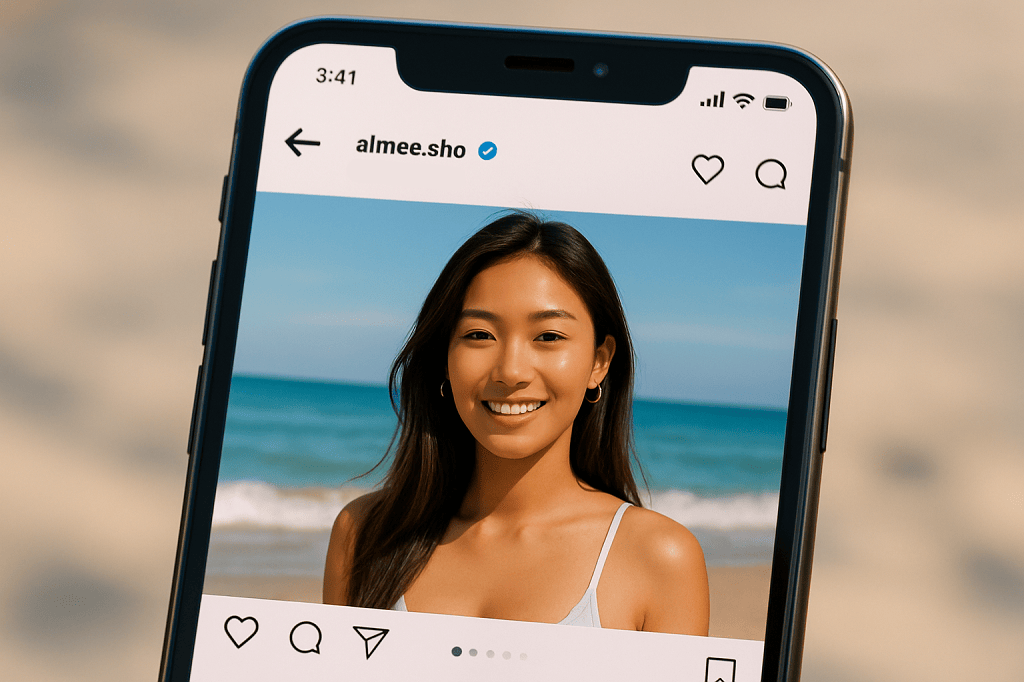
Creating an AI influencer is a bit like building a band member, a mascot, or a fictional protagonist. You’re shaping someone people will recognize on sight and remember by tone. You don’t need a studio or a full design team — but you do need some building blocks.
Visual Identity Creation
The first step is deciding what the character looks like — face, vibe, clothes, colors, posture. Some AI creators lean into high-fashion surreal looks. Others make characters who feel like someone you could actually meet at a café. Both can work. What matters is that the aesthetic feels intentional.
Most creators start with image-generation tools:
- Midjourney
- Stable Diffusion XL / ComfyUI pipelines
- Leonardo AI
These are strong for polished portraits, stylized photos, themed shoots (beach, city, cozy studio, etc.). If you want a character who moves and appears in motion-based content: Ready Player Me, Zepeto, VRoid Studio, and VTuber pipelines create 3D or animated avatars.
A consistent visual identity matters more than photo-real perfection. Followers care more about the personality of the look than whether a shadow is 100% physically accurate. This is where the character becomes an AI generated influencer — someone who feels like they live in their visual world.
Voice, Personality & Text Behavior
Looks get attention. Personality keeps it. The tone of your AI influencer comes from language models — the way they phrase things, the pace of their replies, the micro-attitude in their captions.
To shape voice and conversational behavior:
- Use LLMs (like GPT-based engines or Claude) to define tone.
- Create a character document. This is key. It should include:
- core personality traits
- emotional patterns
- humor style
- flaws (yes, flaws make them likable)
- relationship to the world
- recurring themes or obsessions
- core personality traits
For voiceovers or spoken content:
- ElevenLabs
- PlayHT
- And whisper-based cloning models
These tools make the character sound the same every time. No tired tone, no off-days. This is where your character starts feeling like a person — and where your AI influencer generator setup takes shape.
Content Creation Workflow
Once the visuals and personality are defined, you build a simple posting rhythm. Most creators batch content:
- Generate a set of images.
- Write captions or short scripts based on the character document.
- Add voiceover or animation if needed.
- Schedule posts for the week.
The vibe always matters more than production quality. If the character feels like they’re “showing up,” people stay. If the character feels empty, no amount of fancy editing will help. The goal is to create a presence — not just pictures.
Image Crafting & Growing a Following
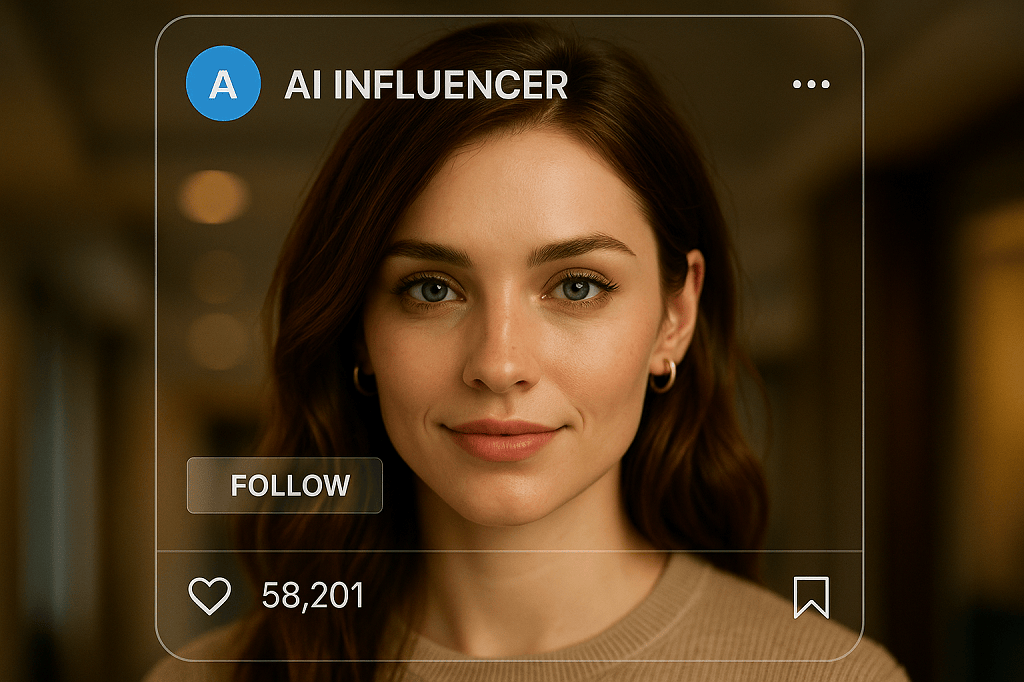
Once the character exists, the real work begins: making them feel like someone people want to keep up with. Not a mannequin. Not a poster. A presence. People follow an AI influencer for the same reason they follow a person — they want a story to return to.
The most effective way to shape that story is to give the character a life narrative. Something compact and recognizable. For example:
“A fashion student in LA who stays up too late journaling and makes playlists named after strangers she meets in cafés.”
Or:
“A gamer who streams at 2 a.m., loves neon jackets, and talks to her audience like they’re old roommates.”
It doesn’t have to be dramatic. It just has to feel like a life.
From there, keep your character’s identity steady through recurring details:
- A favorite jacket that keeps showing up.
- A sentence or emoji they always use.
- A weekly ritual. (“Sunday coffee photo. No matter what.”)
These tiny repetitions make the character feel real. People start remembering them.
Don’t just post the “photoshoot” moments. Mix in “quiet” ones:
- Messy room lighting
- A blurry mirror snap
- A caption that sounds tired, excited, restless — something human
And interact. Reply to comments in the character’s voice. Repost fan art. Answer DMs in a way that feels alive. This is what makes the audience feel like they’re part of the character’s world — not just scrolling past it.
This is where the question how to create AI influencer turns into something emotional. You’re not building content. You’re building continuity.
Promotion Channels
Each platform rewards different styles of presence. Learning the rhythm of each one matters:
- Instagram is where the visual identity settles. Carousels can tell tiny stories — a week of outfits, the “morning mood” series, or quiet snapshots that imply a life happening off-screen.
- TikTok lets the character sound alive. A simple voiceover on top of a trend can reveal humor, attitude, or softness faster than any paragraph ever could.
- OnlyFans or similar fan-based subscription platforms come into play when the relationship gets more personal. These spaces are less about performance and more about intimacy — private chats, custom voice messages, paid requests, or interactive story play. AI works surprisingly well here because the character can show up consistently, respond thoughtfully, and maintain emotional tone without breaking character.
How AI Influencers Make Money
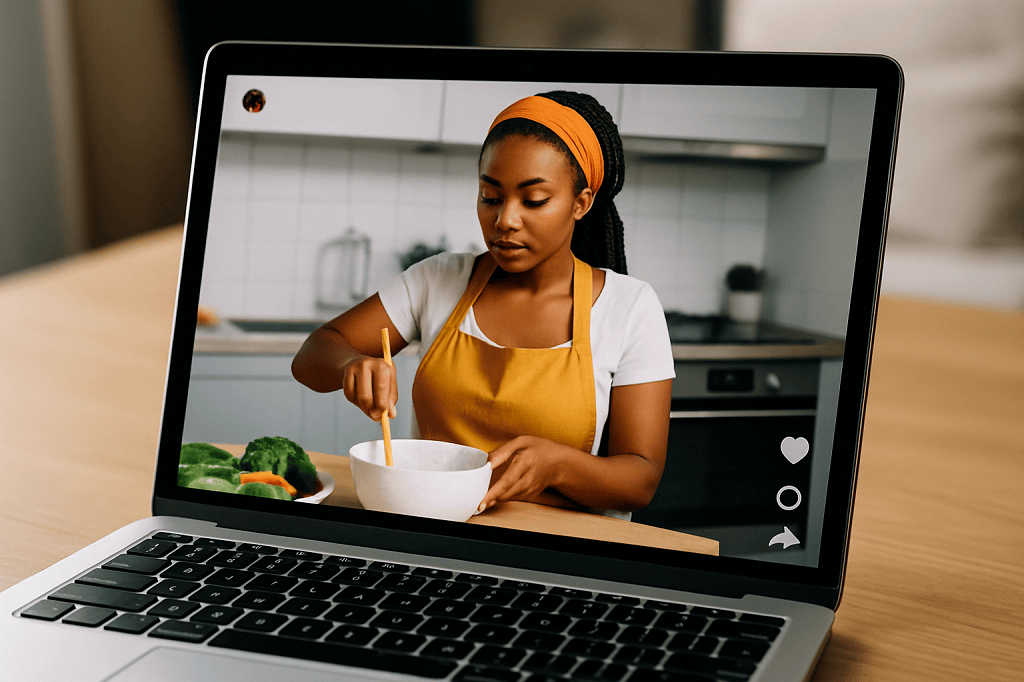
Once a character has a recognizable voice and a small but steady audience, monetization becomes simple. People don’t pay for perfection — they pay for access, closeness, and the feeling of being part of something. And an AI influencer can offer that without the stress or burnout a human creator deals with.
Here are the most common revenue models:
- Brand deals and product placements
Clothing, cosmetics, tech accessories — brands love characters who can present a clean, consistent image. - Patreon-style memberships
Supporters pay monthly for extra photosets, behind-the-scenes personality notes, or ongoing story arcs. - Exclusive subscription spaces (including OnlyFans)
This works when the character feels intimate or emotionally responsive. People pay for access, not shock value. - Private chat monetization
This is where interactive AI personalities thrive. Personalized voice messages, emotional support, roleplay, or just someone to talk to. - Merch or digital collectibles
Posters, 3D avatars, stickers, limited-run aesthetics. - Paid personalization requests
Fans request a custom photo, outfit, message, or scene.
When you create AI influencer experiences that feel consistent — a character with a recognizable inner world — people don’t just follow. They invest. They want to stay connected to the story. And that’s the real engine of revenue here: not volume, but attachment.
Costs & Realistic Expectations
There’s no single price tag for creating an AI influencer. Some people bootstrap everything themselves with open-source models and patience. Others commission artists, voice designers, and editors. The gap is wide, and Reddit discussions reflect that — one person spends $200, another puts in $12,000 before launch. It depends on how polished and consistent you want the character to be from the start.
Here’s a simple way to think about the cost difference:
| Factor | AI Influencers | Human Influencers |
| Creation Cost | ~$1,000–$15,000 initial setup (art, model tuning, voice) | $0 if self-created |
| Per-Post Cost | $0–$50 after setup | $100–$10,000+ per post |
| Consistency | High (same tone forever) | Variable (mood, energy, availability) |
| Authenticity | Limited (you must shape it intentionally) | High by default |
Most of the money goes into visual style training, character personality development, and voice work. Once that’s done, the ongoing cost becomes tiny. That’s why many founders treat AI influencers like long-term digital assets — they keep performing without extra emotional labor.
The realistic part: your character won’t blow up overnight. Growth comes from story, rhythm, and being willing to show the character living, not just posing. That part takes time — like any relationship.
Build Your Own AI Influencer with Scrile AI
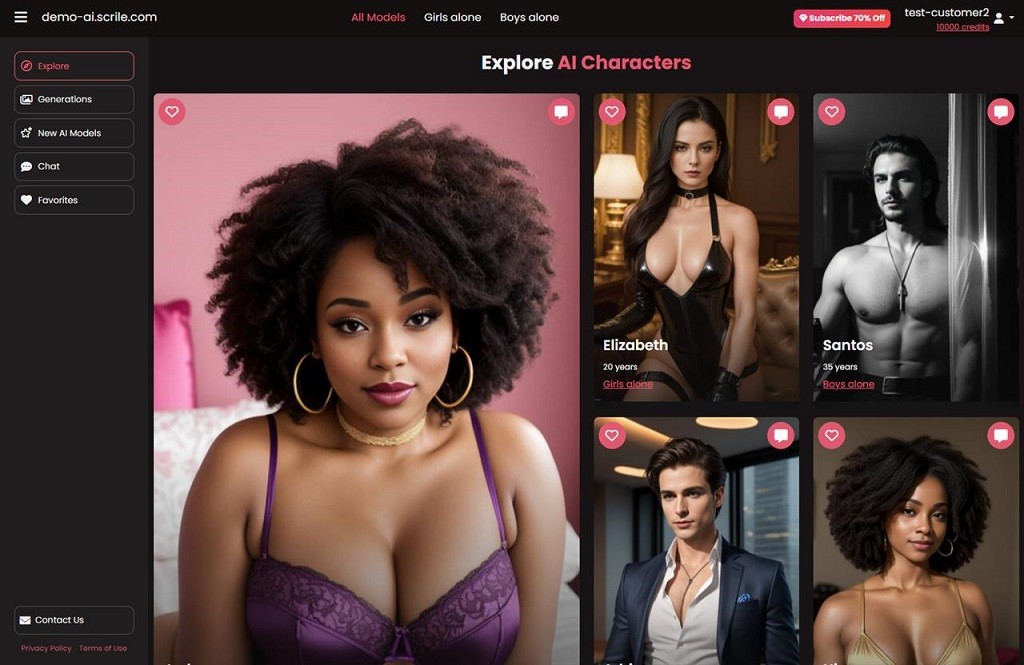
Here’s where everything becomes practical. You’ve now seen the character pieces, the storytelling work, the monetization layers. But doing this across scattered tools can get messy fast. If the plan is to treat your character like a real digital personality, the environment needs to feel cohesive — not patched together from ten different apps.
Scrile AI is built for that.
It’s not a template-based avatar generator or a consumer chatbot app. It’s a customizable development service that lets you shape the character, the world they live in, and the business model around them. You’re not fitting your creation into someone else’s structure — you’re building the structure around your character.
With Scrile AI, you can define:
- The personality logic (how the character speaks, reacts, remembers)
- The visual identity modules (photo style, outfit variations, expression range)
- Monetization flows such as:
- paid chat
- exclusive subscriptions
- VIP access tiers
- content request payments
- paid chat
- A white-label website or app where the character actually lives online
The most important part: you own the brand. You choose the tone, the aesthetic, the rules, the fan experience. You’re not renting space inside another platform’s ecosystem where your work can disappear overnight.
If you’re serious about how to create AI influencer characters who can grow into revenue, you need a place where the story, the personality, the visuals, and the monetization sit together smoothly. Scrile AI gives you that foundation — and leaves room for the character to evolve.
This is how an influencer AI stops being an experiment and becomes an asset.
Conclusion
The real magic of an AI influencer comes from how they feel, not how technically complex they are. People connect with personality, recurring details, tone, rhythm — the sense that someone is “there” on the other side. The tools just help you deliver that presence consistently. If you’re thinking seriously about how to create AI influencer characters that can grow and earn, focus on identity, pacing, and emotional continuity — not perfection.
If you want to build one with real depth and ownership:
Talk to the team, describe the character you want to bring to life, and create a digital personality that’s fully yours — brand, voice, and revenue included.
FAQ
Can I create my own AI influencer?
Yes. Anyone can build one. The real work is defining the character’s personality, visual style, and tone of voice. Once those are set, tools can automate posting and interaction. This is the same basic foundation behind how to create AI influencer characters that feel consistent — you’re crafting identity, not just images.
How much does it cost to create an AI influencer?
It depends on polish. Some creators spend $1,000–$3,000 for visuals, voice, and style setup. More advanced characters with custom training or animation may reach $10,000+. After that, ongoing content costs are low — often $0–$50 per post, compared to the high rates of human influencers.
Are AI influencers legal?
Yes — as long as you follow transparency rules. If an AI character is promoting something, you must disclose sponsorships and note that the character is artificially generated. Clear disclosure keeps everything.
